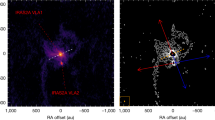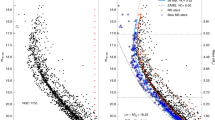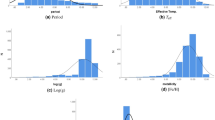Abstract
IT is well known that spectroscopic parallaxes are an index of stellar surface gravity, which in turn is functionally related to the mass and luminosity of a star. If, therefore, there exists a class of stars in which this functional relation differs from that found for the majority of stars, we should expect a lack of agreement of the mean trigonometric, dynamic and spectroscopic parallaxes of these stars.
This is a preview of subscription content, access via your institution
Access options
Subscribe to this journal
Receive 51 print issues and online access
$199.00 per year
only $3.90 per issue
Buy this article
- Purchase on Springer Link
- Instant access to full article PDF
Prices may be subject to local taxes which are calculated during checkout
Similar content being viewed by others
References
Russell, H. N., and Moore, C. F., "The Masses of the Stars" (University of Chicago Press, 1940).
Author information
Authors and Affiliations
Rights and permissions
About this article
Cite this article
HYNEK, J. Giant Binary Stars and the Mass-Luminosity Law. Nature 162, 815–816 (1948). https://doi.org/10.1038/162815a0
Issue Date:
DOI: https://doi.org/10.1038/162815a0
Comments
By submitting a comment you agree to abide by our Terms and Community Guidelines. If you find something abusive or that does not comply with our terms or guidelines please flag it as inappropriate.



